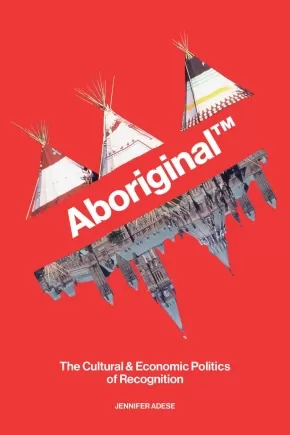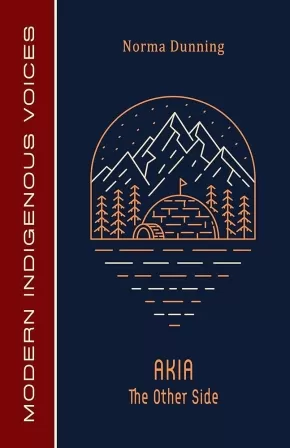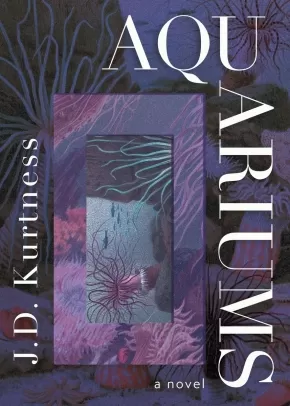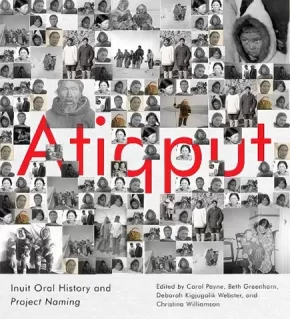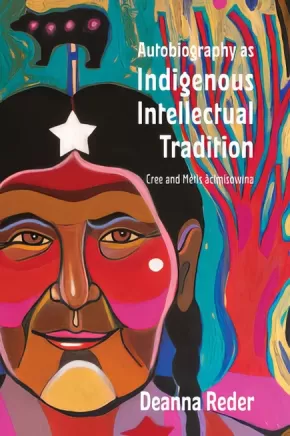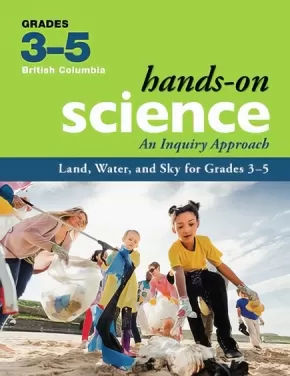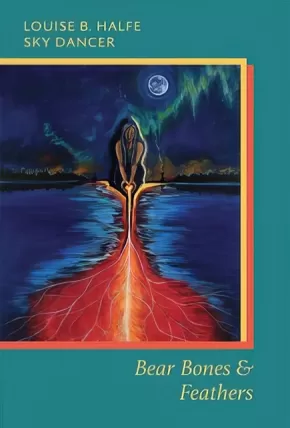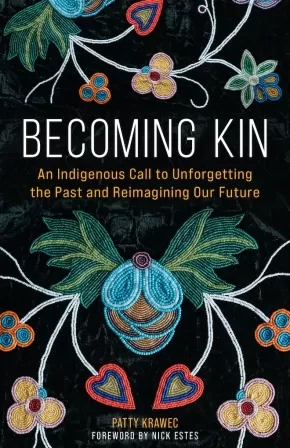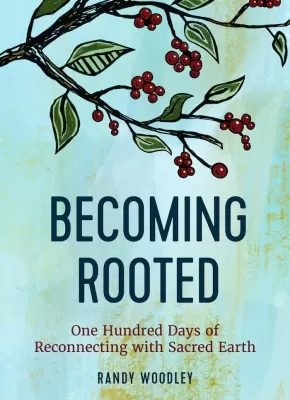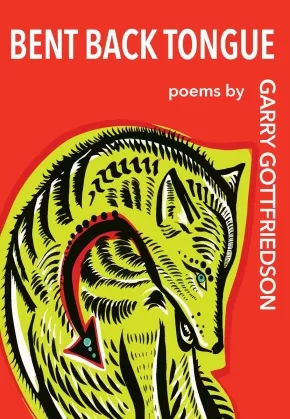
Adult Book
466
-
480
of
1380 Results;
Sort By
Go To
of 92
A Journey of Love and Hope: The Inspirational Words of a Mi'kmaw Elder
$24.95
Artists:
Format:
Hardcover
Text Content Territories:
Indigenous Canadian; First Nations; Mi'kmaq;
Reading Level: N/A
ISBN / Barcode: 9781774711187
Synopsis:
Synopsis:
The long-awaited collection of talks, presentations, prayers, and ceremonies of renowned Mi'kmaw Elder, human rights activist, and language and culture warrior, Sister Dorothy Moore.
Mi'kmaw Elder Sister Dorothy Moore has spent a lifetime advocating for the rights of her people. As a well-known educator and a survivor of the Shubenacadie Indian Residential School, she has broken down systemic barriers, leading the Mi'kmaq to access all levels of education, and worked tirelessly to reclaim and promote Indigenous ways of knowing and being.
In A Journey of Love and Hope, Sister Dorothy's words are collected in print, as she originally spoke them, for the first time. Included are speeches, talks, presentations, and ceremonies delivered between 1985 and 2015 to universities, government departments, and Indigenous organizations and gatherings. Thematic sections include Culture and Language, Spirituality, Racism, Education, and Prayers and Ceremonies, framed by Ikantek (introductions) from well-known Mi'kmaw writers and educators, as well as an Associate Sister of the Sisters of St Martha.
Sister Dorothy's talks and presentations will inspire and serve to disrupt the dominant narratives of complex Indigenous issues such as colonialism, oppression, racism, and discrimination. A Journey of Love and Hope gives a voice to Mi'kmaw lived experiences and provides a valuable resource for use in schools, postsecondary education institutions, and communities. Her words are an inspiration to all Treaty people.
Features original illustrations by celebrated Mi'kmaw artist Gerald Gloade and appendices, including a complete list of Sister Moore's talks and presentations and a timeline of life events.
Additional Information
184 pages | 6.00" x 9.00" | Hardcover | Colour photo insert
A Minor Chorus: A Novel
$27.95
Format:
Hardcover
Text Content Territories:
Indigenous Canadian;
Grade Levels: 12; University/College;
ISBN / Barcode: 9780735242005
Synopsis:
Synopsis:
An urgent first novel about breaching the prisons we live inside from one of Canada’s most daring literary talents.
An unnamed narrator abandons his unfinished thesis and returns to northern Alberta in search of what eludes him: the shape of the novel he yearns to write, an autobiography of his rural hometown, the answers to existential questions about family, love, and happiness.
What ensues is a series of conversations, connections, and disconnections that reveals the texture of life in a town literature has left unexplored, where the friction between possibility and constraint provides an insistent background score.
Whether he’s meeting with an auntie distraught over the imprisonment of her grandson, engaging in rez gossip with his cousin at a pow wow, or lingering in bed with a married man after a hotel room hookup, the narrator makes space for those in his orbit to divulge their private joys and miseries, testing the theory that storytelling can make us feel less lonely.
Populated by characters as alive and vast as the boreal forest, and culminating in a breathtaking crescendo, A Minor Chorus is a novel about how deeply entangled the sayable and unsayable can become—and about how ordinary life, when pressed, can produce hauntingly beautiful music.
Reviews
"No one breaks your heart as elegantly as Billy-Ray Belcourt. Innovative, intimate, and meticulous, A Minor Chorus is a thoughtful riot of intersections and juxtapositions, a congregation of keenly observed laments gently vivisecting the small, Northern Alberta community at its core."—Eden Robinson, author of Son of a Trickster
"The literary child of Rachel Cusk’s Outline trilogy and James Baldwin’s Giovanni’s Room, this novel builds on both, and is yet still something so new. It has the guts to centre Indigenous queer life as worthy of serious intellectual and artistic inquiry—which, of course, it always has been. We will be reading and re-reading and learning from A Minor Chorus for decades to come."—Alicia Elliott, author of A Mind Spread Out on the Ground
"An absolutely dazzling confluence of big ideas and raw emotions, told in Billy-Ray Belcourt’s singular poetic voice. A Minor Chorus is about loving, questioning, and fighting for your life, and it’s as compelling a debut novel as I’ve read in years."—Jami Attenberg, author of I Came All This Way to Meet You
"A truly exceptional novel about how the disregarded sometimes live the most remarkable lives, and how storytelling will redeem us somehow, make us less lonely. A Minor Chorus is like a song that’s over too soon; I want to play it on repeat, to memorize the words so that I can sing them to myself."—Katherena Vermette, author of The Strangers
Additional Information
192 pages | 5.20" x 7.78" | Hardcover
Aboriginal™: The Cultural and Economic Politics of Recognition
$27.95
Format:
Paperback
Text Content Territories:
Indigenous Canadian;
ISBN / Barcode: 9781772840056
Synopsis:
Synopsis:
In Aboriginal™, Jennifer Adese explores the origins, meaning, and usage of the term “Aboriginal” and its displacement by the word “Indigenous.” In the Constitution Act, 1982, the term’s express purpose was to speak to specific “aboriginal rights”. Yet in the wake of the Constitution’s passage, Aboriginal, in its capitalized form, became increasingly used to describe and categorize people.
More than simple legal and political vernacular, the term Aboriginal (capitalized or not) has had real-world consequences for the people it defined. Aboriginal™ argues the term was a tool used to advance Canada’s cultural and economic assimilatory agenda throughout the 1980s until the mid-2010s. Moreover, Adese illuminates how the word engenders a kind of “Aboriginalized multicultural” brand easily reduced to and exported as a nation brand, economic brand, and place brand—at odds with the diversity and complexity of Indigenous peoples and communities.
In her multi-disciplinary research, Adese examines the discursive spaces and concrete sites where Aboriginality features prominently: the Constitution Act, 1982; the 2010 Vancouver Olympics; the “Aboriginal tourism industry”; and the Vancouver International Airport. Reflecting on the term’s abrupt exit from public discourse and the recent turn toward Indigenous, Indigeneity, and Indigenization, Aboriginal™ offers insight into Indigenous-Canada relations, reconciliation efforts, and current discussions of Indigenous identity, authenticity, and agency.
Additional Information
272 pages | 6.00" x 9.00" | Paperback
âhkami-nêhiyawêtân / Let’s Keep Speaking Cree
$32.95
Format:
Coil Bound
Text Content Territories:
Indigenous Canadian; First Nations; Cree (Nehiyawak);
ISBN / Barcode: 9780889778467
Synopsis:
Synopsis:
An important language resource that helps intermediate nêhiyawêtan learners begin to understand more advanced grammar of the language.
Let’s keep on speaking Cree:
In our language is our life;
Let’s keep on speaking Cree:
In our language is our identity.
Building on mâci-nêhiyawêwin / Beginning Cree, Solomon Ratt’s first influential Cree language resource, âhkami-nêhiyawêtân / Let’s Keep Speaking Cree helps intermediate nêhiyawêtan learners begin to understand more advanced grammar of the language. The textbook is more than a language textbook though: it includes a series of the author’s original stories written in Cree, complete with comprehension questions, making it ideal for self-study as well as classroom use.
Educator & Series Information
This book builds on mâci-nêhiyawêwin / Beginning Cree.
Latest Cree language workbook by highly respected author and educator Solomon Ratt, intended for intermediate readers/speakers/
learners
First title in the Continuing Language series, which will build upon our introductory Indigenous language learner texts
Includes sections on going to the doctor, Cree culture and values, protocols, faith, humility, teachings, and more.
Additional Information
304 pages | 8.50" x 11.00" | Spiral Bound
Akia: The Other Side
$18.95
Format:
Paperback
Text Content Territories:
Indigenous Canadian; Inuit;
Grade Levels: 12; University/College;
ISBN / Barcode: 9781772311716
Synopsis:
Synopsis:
In this poetry collection, the author honours Inuit who lay in the past, and Inuit who are with us now and most importantly the Inuit who are waiting to come to us. The author believes it is not okay that Inuit children and adults died and were buried in unmarked graves, their bodies never returned to their loved ones. It is not okay that their relatives were never told of their deaths or where they were buried because keeping track of dead Inuit bodies was simply not very important to Canadian authorities. The author wants to imagine a world free of colonialism, a world without interference in Inuit lives.
Educator & Series Information
This book is part of the Modern Indigenous Voices series.
Additional Information
72 pages | 8.50" x 5.50" | Paperback
Amplifying Indigenous Voices in Business: Indigenization, Reconciliation, and Entrepreneurship
$26.95
Format:
Paperback
Text Content Territories:
Indigenous Canadian;
Reading Level: N/A
ISBN / Barcode: 9781770403406
Synopsis:
Synopsis:
Indigenization is more than reconciliation: It is a better business practice!
Some of the common questions businesses, educational institutions, and communities ask are: “Do we need an Indigenization strategy? If so, why; what is it really?; and, how do we do it?”
Amplifying Indigenous Voices in Business is for organizations and allies who would like to make a positive difference by learning how to amplify Indigenous voices, Indigenize businesses, and support Indigenous entrepreneurship, all in the bigger spirit of reconciliation.
Author Priscilla Omulo addresses Canada’s complicated history with Indigenous peoples and how that contributes to today’s challenges in the business realm. While the challenge is real, so is the opportunity, and Omulo’s step-by-step guide explains how any organization can make immediate plans to improve the way they do business by doing the research, consulting the right people, and formulating a strategy to move forward. Omulo shows readers how a commitment to doing the right thing will lead to a more sustainable and inclusive place for all, and a stronger foundation for businesses and other organizations.
Additional Information
152 pages | 6.00" x 9.00" | Paperback
Aquariums
$21.99
Format:
Paperback
Text Content Territories:
Indigenous Canadian; First Nations; Innu (Montagnais-Naskapi);
Grade Levels: 12; University/College;
ISBN / Barcode: 9781459747760
Synopsis:
Synopsis:
An intimate yet wide-sweeping story of a marine biologist working to save ocean ecosystems from climate change.
With the world’s oceans ravaged by climate change, Émeraude, a young marine biologist, works to preserve aquatic ecosystems by recreating them for zoos. When her work earns her a spot aboard a research vessel with an extended mission in the Arctic, it is the inescapable draw of the ocean that will save her when the world she leaves behind is irrevocably changed.
Stories of Émeraude’s ancestors — a young sailor abandoned at birth, a conjuror who mixes potions for her neighbours, a violent young man who hides in the woods to escape an even more violent war, and a talented young singer born to a mother who cannot speak — weave their way through her intimate reflections on a modest life, unknowingly shaped by those who came before.
Reviews
"Aquariums is a luminous, touching and comforting book, written with great clarity. In other words, a healing read. It can be read in a single sitting, and picked up again when one’s soul needs soothing." — Solaris
"J.D. Kurtness stands out on the indigenous literary scene for her unique style, inspired by dystopian and apocalyptic writing. In Aquariums, the author delivers a fragmented novel of filiation, mixing the different (non-)stories of a lineage and of the same generation, like an aquarium housing an ecosystem, to an apocalyptic end forcing a reset of the planetary population. Kurtness’s aesthetic is characterised by a holistic cosmic writing in which a sort of Glissant’s Tout-Monde is formed: the narratives of ancestors and the living communicate with the perceived and existing elements. This cosmic writing is conveyed through the fragmentary form, which is more organic than functional, the use of nature-related metaphors, that are tied to the life story of a whale, and the hybridity of the novel, which mixes the genres of life writing and dystopia. Although the author is Ilnu, the dimension of autochthony is not central to Aquariums. It is partially present in the discourse and the constellation of characters, but is not actively addressed." - Abstract from Dystopie, Fragmentation et Filiation dans Aquariums de J.D. Kurtness by Jody Danard
"This is a small book on a huge theme, set in various places and eras, featuring different perspectives. It could be confusing, but it works – so much so that I sometimes wished Kurtness had picked up some of her loose threads and developed the stories of Émeraude’s ancestors instead of returning to her protagonist’s journey. I want to know more about the scarred sailor, the blind shark, and the travelling whale. She dips her toe into the fantastical or the romantic and then pulls back, back to the science of a dying world. Aquariums is an inventive book on a grim not-so-distant future. In the end, Kurtness chooses to believe in the resilience of humanity. Like her ancestors before her, Émeraude will fight for her people’s future." - Roxane Hudon, Montreal Review of Books
Educator Information
Translated from French to English by Pablo Strauss
Additional Information
176 pages | 5.00" x 7.00" | Paperback
Atiqput: Inuit Oral History and Project Naming
$45.95
Editors:
Format:
Hardcover
Text Content Territories:
Indigenous Canadian; Inuit;
Reading Level: N/A
ISBN / Barcode: 9780228011057
Synopsis:
Synopsis:
A multigenerational discussion of culture, history, and naming centring on archival photographs of Inuit whose names were previously unrecorded.
"Our names - Atiqput - are very meaningful. They are our identification. They are our Spirits. We are named after what's in the sky for strength, what’s in the water ... the land, body parts. Every name is attached to every part of our body and mind. Yes, every name is alive. Every name has a meaning. Much of our names have been misspelled and many of them have lost their meanings forever. Our Project Naming has been about identifying Inuit, who became nameless over the years, just "unidentified eskimos ..." With Project Naming, we have put Inuit meanings back in the pictures, back to life." Piita Irniq
For over two decades, Inuit collaborators living across Inuit Nunangat and in the South have returned names to hundreds of previously anonymous Inuit seen in historical photographs held by Library and Archives Canada as part of Project Naming. This innovative photo-based history research initiative was established by the Inuit school Nunavut Sivuniksavut and the national archive.
Atiqput celebrates Inuit naming practices and through them honours Inuit culture, history, and storytelling. Narratives by Inuit elders, including Sally Kate Webster, Piita Irniq, Manitok Thompson, Ann Meekitjuk Hanson, and David Serkoak, form the heart of the book, as they reflect on naming traditions and the intergenerational conversations spurred by the photographic archive. Other contributions present scholarly insights and research projects that extend Project Naming’s methodology, interspersed with pictorial essays by the artist Barry Pottle and the filmmaker Asinnajaq.
Through oral testimony and photography, Atiqput rewrites the historical record created by settler societies and challenges a legacy of colonial visualization.
Reviews
“Atiqput brings together statements by Inuit artists, elders, and activists with work by project facilitators and scholars to produce a vibrant tapestry that at once mourns the losses of the past, treasures the traces that can be regained, and celebrates the continued power of Inuit cultural forms.” - Peter Kulchyski, University of Manitoba and author of Report of an Inquiry into an Injustice: Begade Shutagot’ine and the Sahtu Treaty
Additional Information
264 pages | 9.00" x 10.00" | Hardcover
Autobiography as Indigenous Intellectual Tradition: Cree and Metis acimisowina
$34.99
Format:
Paperback
Text Content Territories:
Indigenous Canadian; First Nations; Cree (Nehiyawak); Métis;
Reading Level: N/A
ISBN / Barcode: 9781771125543
Synopsis:
Synopsis:
Autobiography as Indigenous Intellectual Tradition critiques ways of approaching Indigenous texts that are informed by the Western academic tradition and offers instead a new way of theorizing Indigenous literature based on the Indigenous practice of life writing.
Since the 1970s non-Indigenous scholars have perpetrated the notion that Indigenous people were disinclined to talk about their lives and underscored the assumption that autobiography is a European invention. Deanna Reder challenges such long held assumptions by calling attention to longstanding autobiographical practices that are engrained in Cree and Métis, or nêhiyawak, culture and examining a series of examples of Indigenous life writing. Blended with family stories and drawing on original historical research, Reder examines censored and suppressed writing by nêhiyawak intellectuals such as Maria Campbell, Edward Ahenakew, and James Brady. Grounded in nêhiyawak ontologies and epistemologies that consider life stories to be an intergenerational conduit to pass on knowledge about a shared world, this study encourages a widespread re-evaluation of past and present engagement with Indigenous storytelling forms across scholarly disciplines
Educator Information
Table of Contents
BC Hands-On Science: An Inquiry Approach - Land, Water, and Sky for Grades 3-5
$92.00
Format:
Coil Bound
Text Content Territories:
Indigenous Canadian;
ISBN / Barcode: 9781553798804
Synopsis:
Synopsis:
Land, Water, and Sky from Hands-On Science: An Inquiry Approach completely aligns with BC’s New Curriculum for science. Grounded in the Know-Do-Understand model, First Peoples knowledge and perspectives, and student-driven scientific inquiry, this custom-written resource:
- emphasizes Core Competencies, so students engage in deeper and lifelong learning
- develops Curricular Competencies as students explore science through hands-on activities
- fosters a deep understanding of the Big Ideas in science
Using proven Hands-On features, Land, Water, and Sky contains information and materials for both teachers and students including: Curricular Competencies correlation charts; background information on the science topics; complete, easy-to-follow lesson plans; reproducible student materials; and materials lists.
Innovative new elements have been developed specifically for the new curriculum:
- a multi-age approach
- a five-part instructional process—Engage, Explore, Expand, Embed, Enhance
- an emphasis on technology, sustainability, and personalized learning
- a fully developed assessment plan for summative, formative, and student self-assessment
- a focus on real-life Applied Design, Skills, and Technologies
- learning centres that focus on multiple intelligences and universal design for learning (UDL)
- place-based learning activities, Makerspace centres, and Loose Parts
In Land, Water, and Sky students investigate characteristics of the land, water, and sky. Core Competencies and Curricular Competencies will be addressed while students explore the following Big Ideas:
- Daily and seasonal changes affect all living things.
- Observable patterns and cycles occur in the local sky and landscape.
- Water is essential to all living things, and it cycles through the environment.
Educator Information
This book is from the Hands-On Science: An Inquiry Approach (for BC) series. The new Hands-On Science comprehensive resources completely align with the redesigned Science Curriculum for British Columbia.
Recommended for grades 3 to 5.
Indigenous Consultant: Desiree Marshall-Peer, Cree-Ojibway
Indigenous Contributor: Melanie Nelson, Stó:lo¯ and In-SHUCK-ch
Table of Contents
Introduction to Hands-On Science
About Hands-On Science
Format of Hands-On Science
The Multi-Age Approach
Inquiry and Science
The Goals of Science Education in British Columbia
Hands-On Science Principles
Cultural Connections
Indigenous Perspectives and Knowledge
References
How to Use Hands-On Science in Your Classroom
Multi-Age Teaching and Learning
Module Overview
Talking Circles
Multiple Intelligences Learning Centres
Icons
Makerspaces
References
Curricular Competencies: How to Infuse Scientific Inquiry Skills and Processes Into Lessons
Observing
Questioning
Exploring
Classifying
Measuring
Communicating, Analyzing, and Interpreting
Predicting
Inferring
Inquiry Through Investigation and Experimentation
Inquiry Through Research
Addressing Students’ Literacy Needs
Online Considerations
References
The Hands-On Science Assessment Plan
Student Self-Assessment
Formative Assessment
Summative Assessment
Indigenous Perspectives on Assessment
Connecting Assessment to Curricular Competencies
Module Assessment Summary
Important Note to Teachers
References
Assessment Reproducibles
What Are the Features of the Land, Water, and Sky?
About This Module
Curriculum Learning Framework: What We Know and Understand
Curricular Competencies Correlation Chart: What We Do
Resources for Students
Initiating Event: What Do We Observe, Think, and Wonder About the Earth?
What Can We Learn About the Earth Through Stories?
What Do We Know About the Earth?
What Is the Land Like in British Columbia?
How Does Water Affect the Land?
What Are the Effects of Wind and Ice on the Landscape?
Why Do We Have a Day/Night Cycle?
Why Do We Have a Year Cycle?
What Are the Phases of the Moon?
What Is an Eclipse?
What Do We Know About Rocks and Minerals?
How Can We Compare and Classify Rocks and Minerals?
How Are Different Types of Rock Formed?
What Are Some Uses for Rocks and Minerals?
Inquiry Project: How Can We Care for the Earth’s Resources?
Appendix: Image Banks
About the Contributors
Additional Information
200 pages | 8.50" x 11.00" | Spiral Bound
Bead by Bead: Constitutional Rights and Métis Community
$32.95
Editors:
Format:
Paperback
Text Content Territories:
Indigenous Canadian; Métis;
ISBN / Barcode: 9780774865975
Synopsis:
Synopsis:
What does the phrase Métis peoples mean in constitutional terms? As lawyers and scholars dispute forms of Métis identity, and debate the nature and scope of Métis rights under the Canadian Constitution, understanding Métis experience of colonization is fundamental to achieving reconciliation.
In Bead by Bead, contributors address the historical denial – at both federal and provincial levels – of outstanding Métis concerns and Aboriginal rights claims, in particular with respect to land, resources, and governance. Tackling such themes as ongoing colonial policies, the invisibility of Métis women in court decisions, identity politics, and racist legal principles, they uncover the troubling issues that plague Métis aspirations for a just future.
This nuanced analysis of the parameters that current Indigenous legal doctrines place around Métis rights discourse moves beyond a one-size-fits-all definition of Métis or a uniform approach to Aboriginal rights. By raising critical questions about self-determination, colonization, kinship, land, and other essential aspects of Métis lived reality, these clear-eyed essays go beyond legal theorizing and create pathways to respectful, inclusive Métis-Canadian constitutional relationships.
This book is essential reading for scholars and students of Métis and Indigenous studies and Aboriginal law, as well as for lawyers, politicians, and civil servants engaged in Métis issues.
Contributors: Brodie Douglas, Karen Drake, Christopher Gall, Adam Gaudry, Sébastien Grammond, Brenda L. Gunn, Thomas Isaac, Wanda McCaslin , Darren O’Toole, Jeremy Patzer, Signa A. Daum Shanks, D’Arcy Vermette.
Reviews
“Finally, we have a source that in a single place provides material and commentary that will support informed debate and help to come to grips with the questions of Métis identity, community, and constitutional rights. . . . This book accurately addresses who we are: as a people with common values, traditions, culture, way of life, family ties, history, communities and shared territory. . . . There is no question of its value, the knowledge we gain from it and how it will augment everyone’s perspective of the issues of Métis.”—Tony Belcourt, OC, first president of the Native Council of Canada and founding president of the Métis Nation of Ontario
Educator Information
Table of Contents
Foreword / Tony Belcourt
Introduction / Yvonne Boyer, Larry Chartrand, and Wanda McCaslin
1 Métis Identity Captured by Law: Struggles over Use of the Category Métis in Canadian Law / Sébastien Grammond
2 Recognition and Reconciliation: Recent Developments in Métis Rights Law / Thomas Isaac
3 Shifting the Status Quo: The Duty to Consult and the Métis of British Columbia / Christopher Gall and Brodie Douglas
4 The Resilience of Métis Title: Rejecting Assumptions of Extinguishment / Adam Gaudry and Karen Drake
5 Where Are the Women? Analyzing the Three Métis Supreme Court of Canada Decisions / Brenda L. Gunn
6 Manitoba Metis Federation and Daniels: "Post-Legal" Reconciliation and Western Métis / Jeremy Patzer
7 Colonial Ideologies: The Denial of Métis Political Identity in Canadian Law / D’Arcy Vermette
8 Métis Aboriginal Rights: Four Legal Doctrines / Darren O’Toole
9 Suzerainty, Sovereignty, Jurisdiction: The Future of Métis Ways / Signa A. Daum Shanks
Afterword / Yvonne Boyer and Larry Chartrand
Index
Additional Information
236 pages | 6.00" x 9.00" | Paperback
Bear Bones and Feathers
$20.00
Format:
Paperback
Text Content Territories:
Indigenous Canadian; First Nations; Cree (Nehiyawak); Plains Cree; Saddle Lake Cree Nation ;
Reading Level: N/A
ISBN / Barcode: 9781771315784
Synopsis:
Synopsis:
In this new edition of her powerful debut, Plains Cree writer and National Poet Laureate Louise B. Halfe - Sky Dancer reckons with personal history within cultural genocide.
Employing Indigenous spirituality, black comedy, and the memories of her own childhood as healing arts, celebrated poet Louise B. Halfe - Sky Dancer finds an irrepressible source of strength and dignity in her people. Bear Bones and Feathers offers moving portraits of Halfe's grandmother (a medicine woman whose life straddled old and new worlds), her parents (both trapped in a cycle of jealousy and abuse), and the people whose pain she witnessed on the reserve and at residential school.
Originally published by Coteau Books in 1994, Bear Bones and Feathers won the Milton Acorn People's Poet Award, and was a finalist for the Spirit of Saskatchewan Award, the Pat Lowther Award, and the Gerald Lampert Award.
Reviews
"With gentleness, old woman's humour, and a good red willow switch, Louise chases out the shadowy images that haunt our lives. She makes good medicine, she sings a beautiful song."— Maria Campbell, author of Halfbreed
Additional Information
144 pages | 5.75" x 8.50" | Paperback
Becoming Kin: An Indigenous Call to Unforgetting the Past and Reimagining Our Future (HC) (4 in Stock)
$36.49
Format:
Hardcover
Text Content Territories:
Indigenous Canadian; First Nations; Anishinaabeg; Ojibway; Lac Seul;
Reading Level: N/A
ISBN / Barcode: 9781506478258
Synopsis:
Synopsis:
We find our way forward by going back.
The invented history of the Western world is crumbling fast, Anishinaabe writer Patty Krawec says, but we can still honor the bonds between us. Settlers dominated and divided, but Indigenous peoples won't just send them all "home."
Weaving her own story with the story of her ancestors and with the broader themes of creation, replacement, and disappearance, Krawec helps readers see settler colonialism through the eyes of an Indigenous writer. Settler colonialism tried to force us into one particular way of living, but the old ways of kinship can help us imagine a different future. Krawec asks, What would it look like to remember that we are all related? How might we become better relatives to the land, to one another, and to Indigenous movements for solidarity? Braiding together historical, scientific, and cultural analysis, Indigenous ways of knowing, and the vivid threads of communal memory, Krawec crafts a stunning, forceful call to "unforget" our history.
This remarkable sojourn through Native and settler history, myth, identity, and spirituality helps us retrace our steps and pick up what was lost along the way: chances to honor rather than violate treaties, to see the land as a relative rather than a resource, and to unravel the history we have been taught.
Additional Information
224 pages | 5.81" x 8.53" | Hardcover
Becoming Rooted: One Hundred Days of Reconnecting with Sacred Earth
$29.99
Format:
Hardcover
Text Content Territories:
Indigenous American; Native American; Cherokee; United Keetoowah Band ;
Reading Level: N/A
ISBN / Barcode: 9781506471174
Synopsis:
Synopsis:
What does it mean to become rooted in the land? How can we become better relatives to our greatest teacher, the Earth? Becoming Rooted invites us to live out a deeply spiritual relationship with the whole community of creation and with Creator.
Through meditations and ideas for reflection and action, Randy Woodley, an activist, author, scholar, and Cherokee descendant, recognized by the Keetoowah Band, guides us on a one-hundred-day journey to reconnect with the Earth. Woodley invites us to come away from the American dream--otherwise known as an Indigenous nightmare--and get in touch with the water, land, plants, and creatures around us, with the people who lived on that land for thousands of years prior to Europeans' arrival, and with ourselves. In walking toward the harmony way, we honor balance, wholeness, and connection.
Creation is always teaching us. Our task is to look, and to listen, and to live well. She is teaching us now.
"This journey is your personal invitation into a different kind of relationship with nature—or, as I like to say, with the whole community of creation. It is also an invitation into a different kind of relationship with Creator, however you understand Creator to be present in your own life and within everything—as God, as Great Mystery, as a higher power, or as the universe." - Randy Woodley
Reviews
“Randy Woodley reminds us that we all have an understanding of what it means to be indigenous to a spiritual place. Through slowly unfolding layers of meaning, he shows us where we may discover that place for ourselves.”—Steven Charleston, elder of the Choctaw Nation of Oklahoma
“Becoming Rooted offers us a precious way back into the land: a way into restoration and reciprocity, a way into healing ourselves and the land, a way of belonging again, a way of finding out who we are. Randy Woodley takes us by the hand and walks with us for the first one hundred days. We begin to think and feel differently, our senses gain new direction, and we start to gain roots. I am so grateful for this book and for the life and work of Randy Woodley.”— Cláudio Carvalhaes, associate professor of worship, Union Theological Seminary
“Becoming Rooted draws you deeper into relationship with the land where you live. Few of us live in the place we were born, but these reflections take you past that disconnection and help you notice the world around you in new ways.”—Patty Krawec, Anishnaabe author and co-host of the Medicine for the Resistance podcast
Educator Information
Includes meditations, reflections, and action items for 100 days.
Additional Information
256 pages | 5.20" x 7.10" | Hardcover
Bent Back Tongue
$20.00
Format:
Paperback
Text Content Territories:
Indigenous Canadian; First Nations; Salish; Interior Salish; Secwepemc (Shuswap);
Reading Level: N/A
ISBN / Barcode: 9781773860961
Synopsis:
Synopsis:
Bent Back Tongue is a raw examination of love, identity, politics, masculinity, and vulnerability. Through sharp honesty and revealing satire, Gottfriedson delves into Canadian colonialism and the religious political paradigms shaping experiences of a Secwépemc First Nations man. This is a book that tears through deceptions that both Canada and the church impose on their citizens. Gottfriedson tackles the darkest layers of a shared colonial history; at the same time, the poems in Bent Back Tongue are a celebration of love, land, family, and the self.
Additional Information
120 pages | 5.50" x 8.00" | Paperback
Sort By
Go To
of 92





